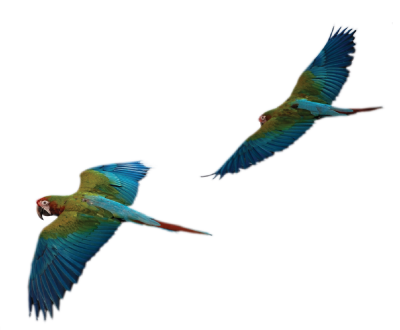
Hand Feeding Baby Parrots
Hand-Feeding Baby Parrots For Flight Training
Written by Chris Biro, Copyright 8-23-2008
 There have been some questions about what my position is regarding hand feeding baby birds for freeflight training purposes. So let me go over this here. We have discussed various aspects of this but I thought a post specifically about this subject might help clarify things more.
There have been some questions about what my position is regarding hand feeding baby birds for freeflight training purposes. So let me go over this here. We have discussed various aspects of this but I thought a post specifically about this subject might help clarify things more.
First off, I do believe the absolute best freeflight student is a bird that is fledging at the natural age. I also believe it is best if the bird has been with the current hand feeder for some time prior to fledging. Exactly what time is needed depends on the duration of the birds various development stages. For the first few weeks of the baby birds life it is mostly in sleep/grow/eat/poop mode with very little energy or ability to observe the world around them. But at about the time the baby bird is mostly covered in feathers, the bird starts perking up, becoming more active and interested in looking around at things going on around it. It is my understanding their brain is developing in stages. It seems it takes a while after they hatch to be ready to start imputing information about the outside world. It makes sense that the brain would reach this stage at about the same time as the birds body is nearing fledging age. Obviously the brain needs to be processing information about the world outside the nest prior to fledging and again it makes sense to me that this stage would coincide with the body becoming nearly fully feathered.
 This time frame then between fully flighted and the body being mostly covered in feathers is when the bird is mentally preparing for those first flights from the nest. I think during this time frame it is important for the trainer to be involved with the baby bird if the trainer is after maximum training potential. I am not saying that parrots raised by someone else during this stage cannot be trained to fly outdoors. But that is not the most ideal way to approach this training.
This time frame then between fully flighted and the body being mostly covered in feathers is when the bird is mentally preparing for those first flights from the nest. I think during this time frame it is important for the trainer to be involved with the baby bird if the trainer is after maximum training potential. I am not saying that parrots raised by someone else during this stage cannot be trained to fly outdoors. But that is not the most ideal way to approach this training.
So if I am interested in setting up the most ideal training situation for training a flighted bird, then I want to get it at about the age it is getting most of its feathers. Fully covered in pin feathers is what I usually suggest when I am talking to a breeder. This lets us get the hand feeding process well established prior to the bird starting to take note of details in its environment.
 If we are talking about a bird being pulled from the nest box, then I will also consider the ease of transitioning to a hand feeder instead of the natural parents. I have had good luck with having easy transition to me feeding the baby after pulling it from the parents at between 4 and 6 weeks of age. Longer than 6 weeks and the baby bird can be resistant to accept the new feeder and it may take several days to get the baby to accept feeding. I am assuming this distinction is related to the brain development mentioned above and the birds starting to internalize information about its world.
If we are talking about a bird being pulled from the nest box, then I will also consider the ease of transitioning to a hand feeder instead of the natural parents. I have had good luck with having easy transition to me feeding the baby after pulling it from the parents at between 4 and 6 weeks of age. Longer than 6 weeks and the baby bird can be resistant to accept the new feeder and it may take several days to get the baby to accept feeding. I am assuming this distinction is related to the brain development mentioned above and the birds starting to internalize information about its world.
If we are talking about a baby bird that has been hand fed by the breeder from a much earlier age, then the transition to a new feeder is fairly easy, even at older ages. So in this case, I am looking at the feathering as the primary factor in determining the age to get the bird.
So now I have a target age to acquire the baby bird for maximum training effect and that age corresponds to becoming mostly covered in feathers. This means that the trainer must already be prepared to feed and care for this baby bird when it arrives. Being familiar with hand feeding methods for a baby bird at this age is very important. Being familiar with signs of problems so you’ll know when to seek outside help is also important. And though hand feeding a baby bird at this age is not nearly as difficult as hand feeding much younger birds, I am not suggesting people with no hand feeding experience should attempt to do this without significant assistance from a person who has experience with hand feeding. My point is that this is the proper age to start this process if you want the maximum effect for training, that is in no way recommending everyone should do this on their own without assistance or without experience. It is obviously not in the trainers’ interests to lose their new bird before it ever gets to fly due to lack of hand feeding experience. As with any complex behavior, the trainer needs to make sure they are adequately prepared for the task at hand, in this case hand feeding a baby bird. And though hand feeding is not very difficult there are numerous things that can go wrong and there are numerous details that make a big difference. It is important for the trainer to have either their own experience with hand feeding or have a person experienced in hand feeding baby birds involved who can coach and oversee the trainer in this process.
There are various methods of approaching hand feeding and each have their own advantages and disadvantages.
For maximum safety, the use of a small spoon to deliver the formula is a great method. It is a bit slow and messy, thus many breeders do not use it. But if you are only raising one baby bird, then this would be a good approach.
The paper cup method is also fairly safe. In this method the formula is delivered using a couple paper cups nested together for additional strength. You do not want the plastic cups as they break and can cut the baby. But the paper cups can be squeezed to create a V or U shape that pours the food into the babies open beak similar to how the parents’ beaks interact with the baby. This approach can be messy also but is quicker than the spoon method.
Syringes can be used to deliver the formula and are very convenient but do increase the ease of aspirating the baby. With proper instruction syringe feeding is a good method if used carefully.
Tube feeding or gavage feeding is the fastest, least likely to aspirate during the feeding process but overfeeding is easier which can also cause aspiration. Tube feeding is the most technically demanding. I do not prefer tube feeding since the baby bird does not learn how to use its mouth and throat to swallow the food. I do not recommend this method for the purposes of raising a flighted bird. I like the baby to have already learned to use its mouth to swallow the food when I get it. This is not a critical point for me but if it comes down to choosing between a baby that has been tube fed or syringe or paper cup fed, I would select the syringe or paper cup fed bird over the tube fed baby. Also tube feeding is typically done so quickly but breeders with lots of babies that the individual baby bird only gets a few seconds of physical contact with each feeding. I am not sure this is as mentally healthy for the baby as some of the other methods where there is more time and physical contact involved.
The main details that must be fully understood and monitored include hand feeding formula temperature and consistency, amount fed, schedule of feeding, weight gain, cleanliness of instruments, and the brooder temperature and humidity. With appropriate instruction, these all are easily mastered within a short time. The younger the age, the more critical these details are. I believe that with proper supervision and coaching the average person can learn to hand feed a baby bird at the age we are discussing here for flight training. For more information about hand feeding baby parrots for freeflight, see the article by Ray Varella.
[nggallery id=7]
Parrots: more than pets, friends for life.Chris Biro
Resources and More
The Pirate's Parrot Show
An educationally based pirate-themed parrot show performing at state and county fairs since 1991. The Pirate’s Parrot Show is a Fun, Educational, and Interactive experience for all ages and cultures.
Bird Recovery International
One in every eight bird species in the world today is in danger of extinction and these numbers are increasing! Find out how this non-profit organization started by Chris Biro can help save and protect parrots and other birds.
Podcasts with Chris Biro
An Alternate Perspective – Enjoy these audio Podcasts of Chris with guests discussing the nature of training flighted birds. The discussions are intended to be loosely structured around a general topic.
Email Us
chris@libertywings.com
Call Us
(206) 618-2610
Contact Us
By Using the Contact Form
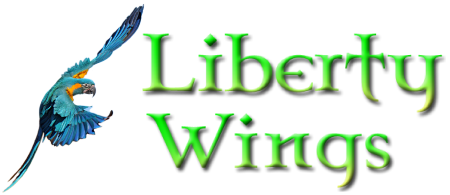
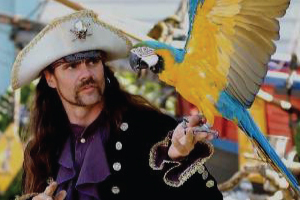
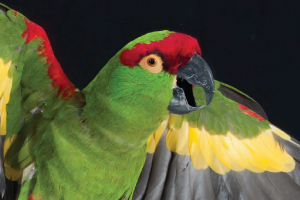
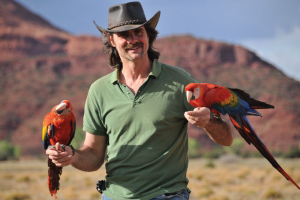
Article Comments